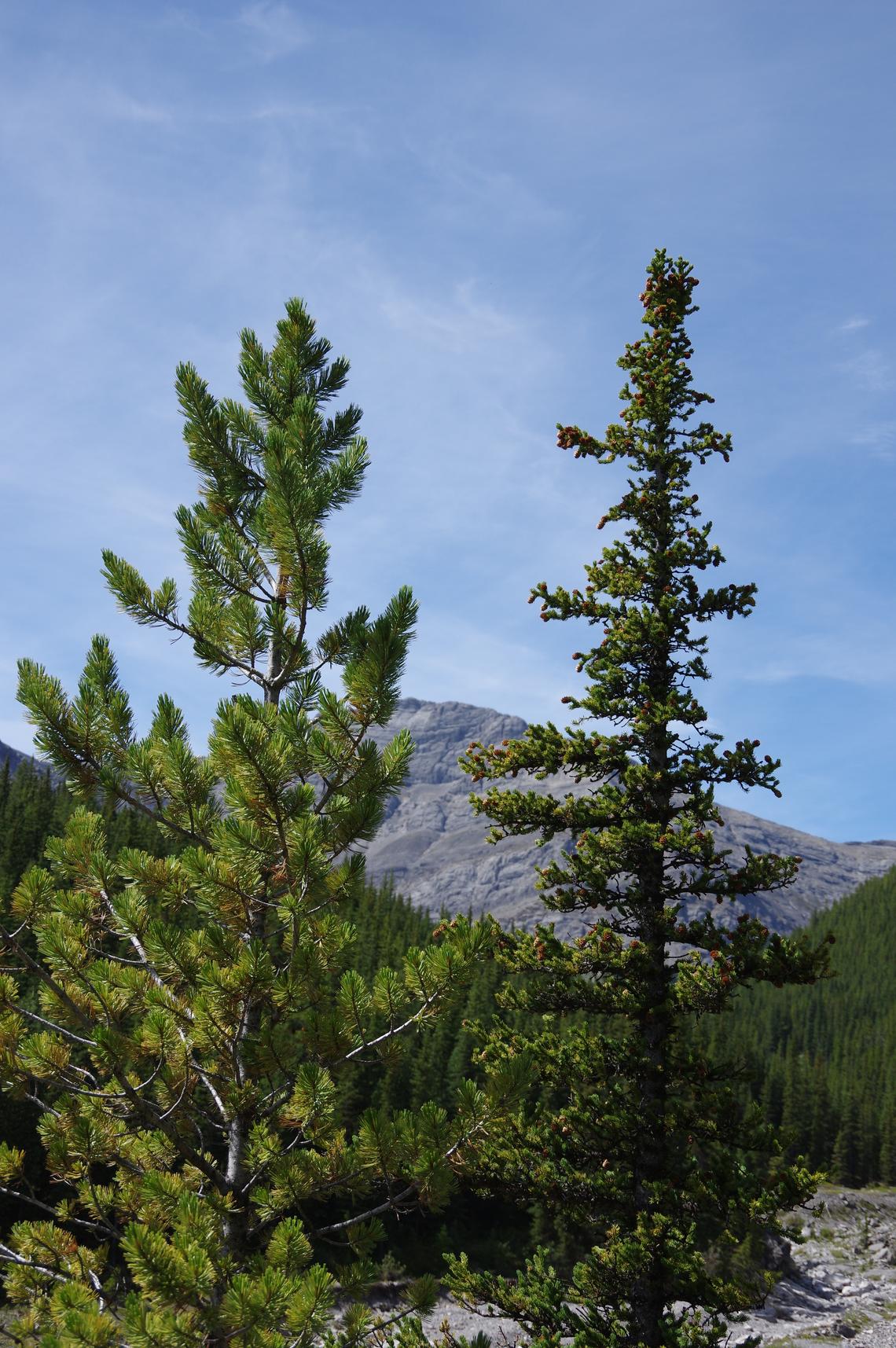Sept. 26, 2016
New research sheds light on how lodgepole pine and interior spruce adapt to local climates

Sam Yeaman and others have found that pine and spruce use the same suite of 47 genes for adaptation.
Riley Brandt, University of Calgary
Two commercially valuable tree species — lodgepole pine and interior spruce — use the same limited number of genes to adapt to local climates, Faculty of Science researcher Sam Yeaman and international colleagues have found.
Their collaborative study shows that pine and spruce use the same suite of 47 genes for local adaptation to low temperatures, even though the two distinct tree species took different evolutionary paths 140 million years ago — the same amount of time that separates humans and kangaroos.
The discovery, published in the top-tier journal Science, sheds light on the genomic basis of local adaptation, and also could lead to new technology for selecting trees that will thrive in a warming global climate.
“Seeing that trees are doing the same thing, using similar genes, gives us a way to understand what factors constrain their evolution over the long term,” says Yeaman, lead author on the paper, assistant professor in the Department of Biological Sciences and Alberta Innovates - Health Solutions Chair in Bioinformatics and Computational Biology.
“In the long run, we’re hoping that by being able to genotype these trees very quickly and easily, it will help foresters screen and select for robust trees that would do better in a wide range of temperatures.”
Trees prefer ‘home ground’
Lodgepole pine and interior spruce — both conifers — are the No. 1 and No. 2 species most planted by the forest industry in British Columbia and Alberta, with about 150 million lodgepole pine planted each year.
Foresters have long known that if trees are planted in regional climates that are different than their home range, they won’t grow well, even if that place is within the native species range.
“Trees can’t migrate quickly enough to keep up with climate change, and this leads to reduced growth and increased losses from pests and pathogens,” says study author Sally Aitken, project leader of the AdapTree Project and professor of forest and conservation sciences at the University of British Columbia.
“This study will help forest managers to select and plant trees that are better matched with new climates, assisting the migration of the trees. It will also accelerate research on climate adaptation in other tree species.”

Lodgepole pine, left, and interior spruce — both conifers — are most planted by the forest industry.
Tracking genes involved in adaptation
Conifer genomes (a genome is the complete set of an organism’s DNA, including all its genes) have about 20 billion DNA letters in each cell — many more than in humans.
So instead of trying to sequence the entire genome, the research team used new technologies to sequence the DNA from 23,000 targeted genes in over 500 trees from each species, collected from more than 250 locations in western Canada.
The team then searched for genes that had DNA variations with particularly strong relationships with local climates, or with seedling traits like cold hardiness which is also associated with drought stress and dry environments.
Previous research showed there are thousands of genes in both pine and spruce that are turned on or off in response to stressors such as different temperatures or amounts of precipitation. Given these short-term responses to stress, in theory there are many genes the tree species could have used to genetically adapt to local climate regimes.
“But, as the same 47 genes are used in both species, this suggests that nature may only have a limited number of ways to solve the problems of surviving in harsh environments,” Yeaman notes.
Next steps in research
Yeaman and his colleagues have another project that will extend the search for similar genetic patterns in other conifer species, including Douglas fir, western larch and jack pine, and will also study the genetic basis of resistance to fungal pathogens.
Kim Gilbert, a researcher in the group doing her PhD at UBC, is also doing genetic analysis on samples from 10 different tree populations planted in B.C. in the 1970s. The aim is to determine if predictions based on the group’s study data, about how well the trees are genetically adapted to local climate conditions, are borne out in the long-term growth of the trees.
Along with the University of Calgary, the study included the University of British Columbia, the University of Alberta, Monash University in Australia and, in the United States, Northeastern University in Massachusetts and Virginia Polytechnic Institute and State University.
Organizations providing support included Genome Canada, Genome British Columbia, Alberta Innovates Bio Solutions, and Genome Alberta, and 63 forest companies that donated tree seeds.
